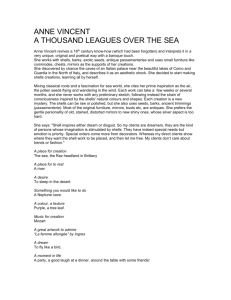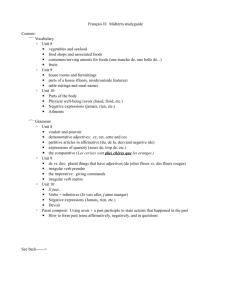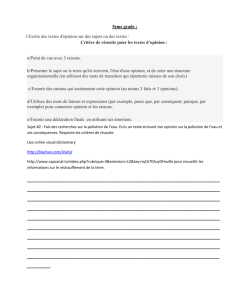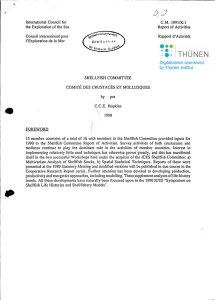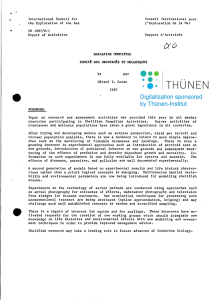A Thousand Words - Brigham Young University
advertisement
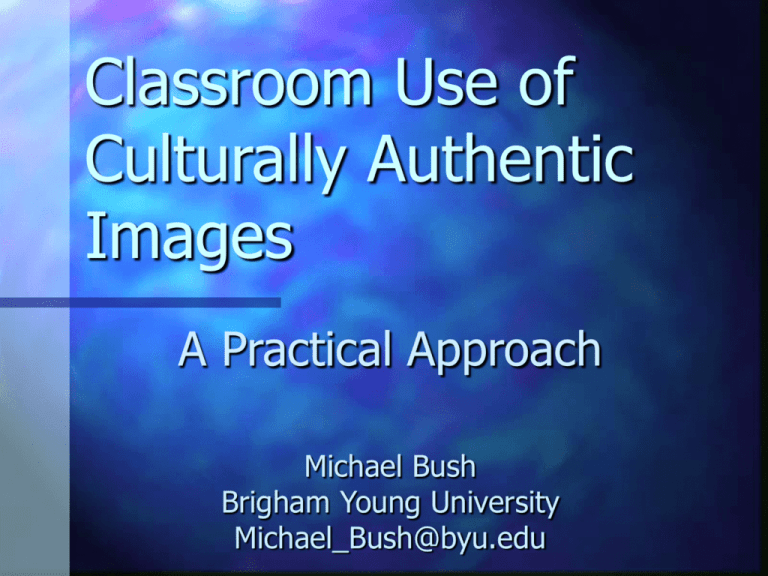
Classroom Use of Culturally Authentic Images A Practical Approach Michael Bush Brigham Young University Michael_Bush@byu.edu Approach for Yesterday Learn about language Memorize vocabulary Memorize grammar rules Images in the Language Classroom Education in the Information Age Humans have learned through sights and sounds for thousands of years. Images and sounds are compatible with today's students. How do our students learn today? The textbook! Images in the Language Classroom Big Question Primacy of text? Images in the Language Classroom Socrates’ view on writing… This discovery of yours will create forgetfulness in the learners' souls, because they will not use their memories; they will trust to the external written characters and not remember of themselves. Plato’s “Phaedrus” Images in the Language Classroom Socrates’ view on writing… The specific which you have discovered is an aid not to memory, but to reminiscence, and you give your disciples not truth, but only the semblance of truth; they will be hearers of many things and will have learned nothing; they will appear to be omniscient and will generally know nothing; they will be tiresome company, having the show of wisdom without the reality. Plato’s “Phaedrus” Images in the Language Classroom History of Communication A story of humankind bridging time and space with increasing fidelity… Multimedia (not only text, but images, sounds, and video): A natural step in the evolution of communication and information technology. Images in the Language Classroom Audiovisual Organism Vision and images were critically important to our survival as a species, along with speech and hearing,” Mary Alice White, Columbia's Teachers' College Images in the Language Classroom “Story” as Medium People think in terms of stories. They understand the world in terms of stories that they have already understood. New events or problems are understood by reference to old previously understood stories and explained to others by the use of stories. (Roger Schank, Tell me a Story) Images in the Language Classroom Why use pictures? Learning psychology Multi-modal, multi-sensory presentations Connections to schemata Binding Semantization Images in the Language Classroom Binding Binding is the term I propose to describe the cognitive and affective mental process of linking a meaning to a form. The concept of binding is what language teachers refer to when they insist that a new word ultimately be associated directly with its meaning and not with a translation. Terrell (1986) Images in the Language Classroom Semantization Evidence is mounting that the use of visual representations may precipitate the semantization process. Especially with concrete picturable words (e.g. table, house) the picture serves as an associative aid to constructing the conceptual network that is connected with a word. Pictures not only represent reality but they can, through selective presentation of cues, provide a prototypical meaning. Pictures appear to be importantly implicated in concept formation and in this respect they obviously affect how well we remember verbal material Beheydt (1987, p. 62) Images in the Language Classroom Culturally authentic pictures? Varying Perceptions of reality Denotation versus connotation (pain) Conceptual accuracy Functional culture (un chariot) Images in the Language Classroom Images in the Language Classroom Images in the Language Classroom Joy’s study Vocabulary and culture Significant differences Images in the Language Classroom Images in the Language Classroom Gina’s study What made the difference? Think aloud protocols faire les courses un chariot Direct versus indirect Images in the Language Classroom Quand on va au supermarché, on veut un chariot pour transporter les produits. Images in the Language Classroom Les Français aiment ces petits magasins parce qu’ils sont près de chez eux, et aussi parce que les produits sont frais. Beaucoup de personnes préfèrent aller aux petits magasins parce que la qualité est très bonne. Images in the Language Classroom En général, les Français font les courses plus souvent que les Américains. Images in the Language Classroom Current Images Database Approximately 4,000 photos France, Canada and Senegal BYU library electronic archives High quality PhotoCD Images in the Language Classroom Organizing Images Framework Threshold Level Council of Europe – Database One approach Pre-fabrication Roll your own Folder structure Images in the Language Classroom A Thousand Words: The Power of Authentic Cultural Pictures LA POUTINE LA POUTINE Québec France (Nice) Une journée comme une autre… • Ecoutez l’histoire • ET • regardez les images… Nice la mer la plage le petit déjeuner nager le marché la mer la boulangerie le pain les bons gâteaux une tarte aux fruits des millefeuilles un caddie du lait des oeufs du beurre des pâtes chez le charcutier du pâté des saucisses du jambon du fromage à la poissonnerie du poisson des calmars des huîtres des crevettes, du crabe, des moules et des coquillages au marché des haricots verts, des tomates et des endives des fraises des framboises des fleurs une salade à la plage La Fin Approach for Today “Constructing” knowledge Learn by doing Images in the Language Classroom Grammar? Yes! Change the role of grammar: From the starring role To a supporting role. Images in the Language Classroom





